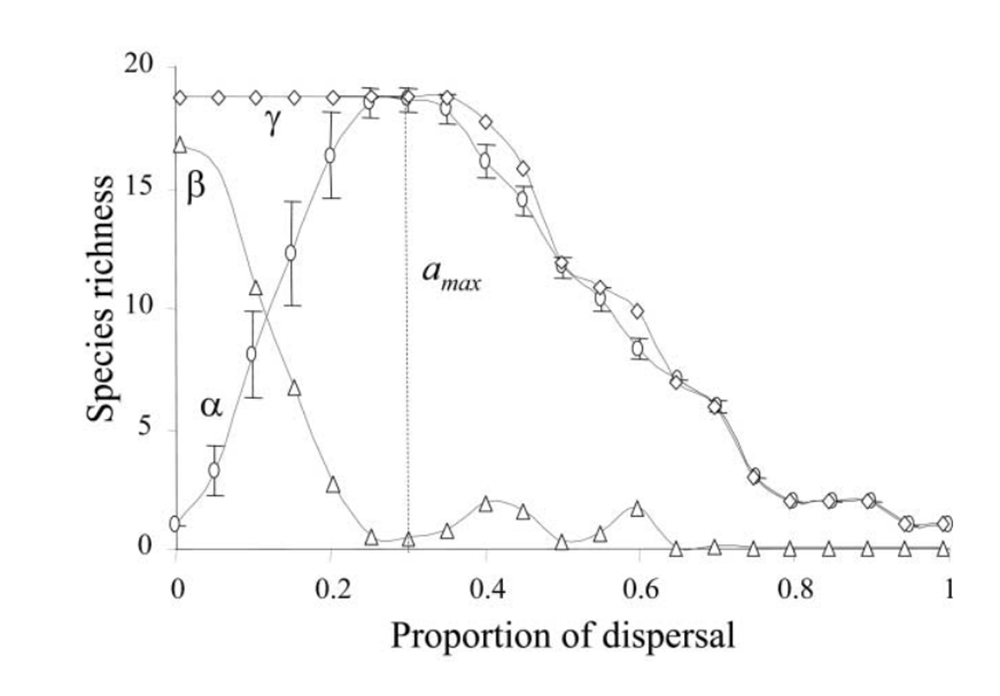COMMUNITY PATTERNS IN SOURCE-SINK METACOMMUNITIES
Mouquet N. and Loreau, M. (2003).
American Naturalist, 162, 544-557, doi:10.1086/378857
Key message : We present a model of a source-sink competitive meta- community, defined as a regional set of communities in which local diversity is maintained by dispersal. Although the conditions of local and regional coexistence have been well defined in such systems, no study has attempted to provide clear predictions of classical community-wide patterns. Here we provide predictions for species richness, species relative abundances, and community-level functional properties (productivity and space occupation) at the local and regional scales as functions of the proportion of dispersal between communities. Local (a) diversity is maximal at an intermediate level of dispersal, whereas between-community (b) and regional (g) diversity decline as dispersal increases because of increased homogenization of the metacommunity. The relationships between local and regional species richness and the species rank abundance distributions are strongly affected by the level of dispersal. Local productivity and space occupation tend to decline as dispersal increases, resulting in either a hump-shaped or a positive relationship between species richness and productivity, depending on the scale considered (local or regional). These effects of dispersal are buffered by decreasing species dispersal success. Our results provide a niche-based alternative to the recent neutral-metacommunity model and have important implications for conservation biology and landscape management.
